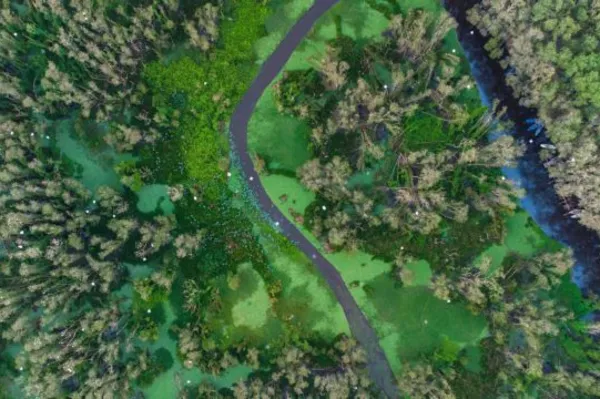 Environment
Environment

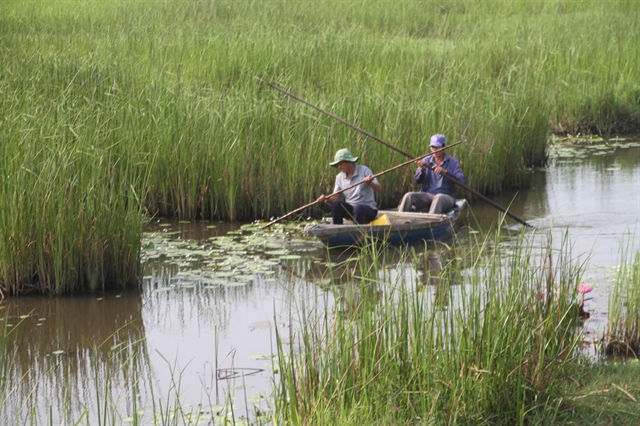 |
| Local fishermen earn a living in the Đầm River in Tam Kỳ City of the central Quảng Nam Province. The wetland river ecology system will be becoming a protected wetland recognition site in 2030-50. Photo courtesy of Trần Lan Anh |
QUẢNG NAM — Covering 650 hectares to the northeast of Tam Kỳ City, the capital of Quảng Nam Province, the wetland ecology system of Đầm River is a unique rich biodiversity store and a ‘green’ lung for the coastal urban and central region.
The zone which has 200 hectares under water, is home to 295 flora and fauna species including 33 fish, 16 reptiles and 31 bird species and has been designated as a wetland conservation area.
Experts and biologists have spotted several endangered species --such as the Asian openbill stork (Anastomus oscitans) and the rarely seen custard apple (the Annonaceae).
The rich food area was also a safe stop for a population of 4,000 migrant birds, who sheltered there for three months during their migratory journey.
 |
| Stocks are found living in the Đầm River, 3km away from Tam Kỳ City. The site has been designated as an area for sustainable tourism and environmental protection. Photo courtesy of Quảng Nam Newspaper |
Restoring the ecological system in the area has been paid for from a fund of VNĐ8.9 billion (US$350,000) to recover the landscape and establish wetland plants including paperbarks (Melaleuca), nipa-palm and reeds in 2020-26.
The wetland is now being created as somewhere which could be the destination for a community-based eco-tour, with sustainable aquatic fishing, as well an opportunity to see rare wildlife bird species in central Việt Nam.
Scientist Vũ Tiến Chính, from the Việt Nam Museum of Nature, said a scientific research programme has been carried out to identify the rich value of the wetland ecology system of the Đầm River.
But to protect the eco system there also needs to be management of wastewater treatment from industrial parks, control over the release of pesticides used in farming and an end to over-fishing practices among community in the area, the scientist said.
Lê Quang Thanh, a local fisherman in Tam Thăng commune – one of three communities in the core zone including Tam Phú commune and An Phú ward in Tam Kỳ City – said the zone has been a breadwinner for local communities with an abundant fish and aquatic resources.
“We have for a long time using nets to fish as a traditional practice, but recent over-exploited electric shocking tools would lead to soon extinction of fish and species in the freshwater wetland,” Thanh said.
“The establishment of the protected wetland site and community-based eco-tour service would benefit local communities a bilingual goal in terms of sustainable livelihood and nature protection. Fishing and rice farming is our major livelihood, and it will also provide tourism experience for visitors a landscape and lifestyle of local community as well.”
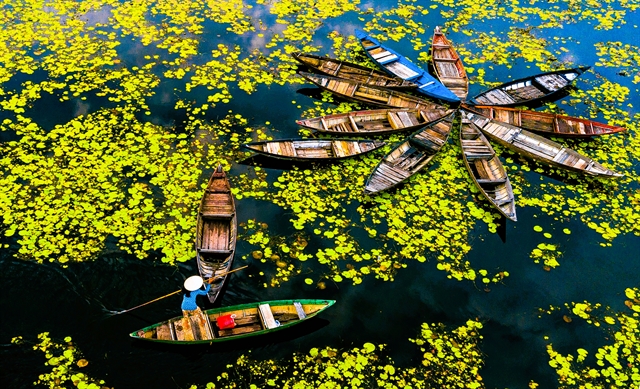 |
| Local residents living in the Đầm River offer eco-tour service by boosting their traditional fishing practice, aquaculture and nature experience. - Photo courtesy of Quảng Nam Newspaper |
He said the provincial authorities have funded local farmers in growing a 20 hectare lotus farm and various fish farms in improving income and reducing over-fishing.
Acting chairman of Tam Kỳ City’s people’s committee, Nguyễn Minh Nam said the Đầm River wetland ecology system has been earmarked as having an important role in building Tam Kỳ City as a ‘green’ and a rich biodiversity urban in central Việt Nam in 2030-50.
“The river wetland zone has supplied water for rice farms, which remains as a reservoir of flood water in rainy season. It also keeps the city cooling with rich oxygen and a favourite destination,” Nam said.
“It is designed as a store for flora and fauna for science research and a rescue centre for wetland and wildlife birds in the central and central highlands region.”
Nam said a landscape 10.5km ring-road system along the Đầm River banks has been built and a 6km ‘green’ protection of the core zone was planted to create a biodiversity site.
Quảng Nam province has two UNESCO-recognised world heritage sites – the Mỹ Sơn Sanctuary and the ancient town of Hội An – and the world biosphere reserve Hội An-Chàm Islands.
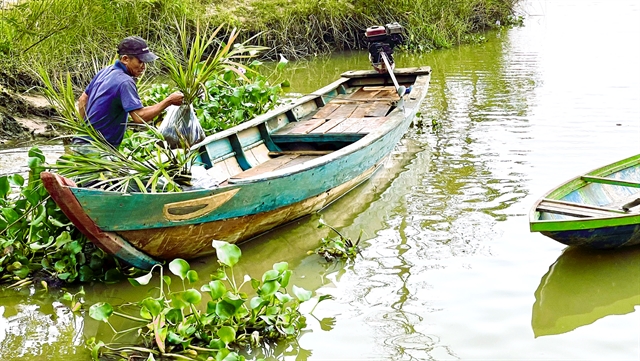 |
| A fisherman replanting wetland fauna in the Đầm River of Tam Kỳ City in the central Quảng Nam Province. The province has committed to recovering and regrowing 30 hectares of wetland plants, nipa-palm and reeds in 2020-26. Photo courtesy of Quảng Nam Newspaper |
It has been speeding up the restoration of forestry and biodiversity, with a view to becoming an international destination and a biodiversity-based green growth power base in the Master Plan 2021-30, vision 2050.
Quảng Nam has preserved Sông Thanh National Park and the Ngọc Linh nature reserve as a reserve for the sao la, Vũ Quang ox and the Asian bicorn (Pseudoryx nghetinhensis), one of the world’s rarest large mammals, a protected area of the endangered Asian elephant and a safe habitat for a population of 60 grey-shanked douc langurs (pygathrix cinerea).
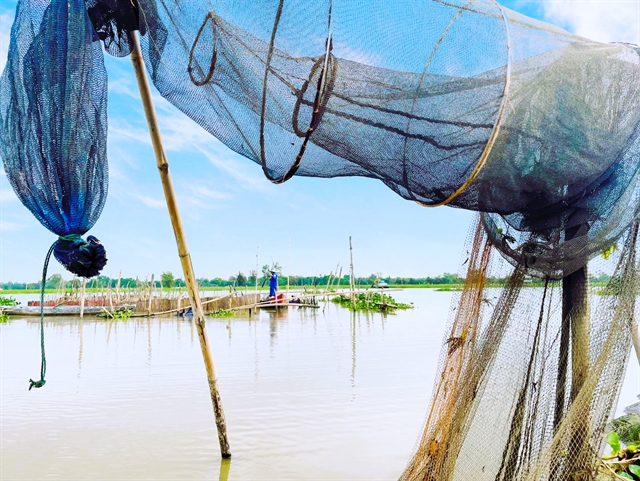 |
| Net-fishing is a traditional practice of fishing communities living in the Đầm River in Tam Kỳ City. The site offers a nature-based eco-tour service. Photo courtesy of Quảng Nam Newspaper |
The province has been structuring a pilot plan to export 2.5 million carbon credits per year from 2021-25.
It will replant more than 50,000 hectares to reduce 14 million tonnes of carbon emissions while supplying seven million cubic metres of timber in 2030. - VNS




